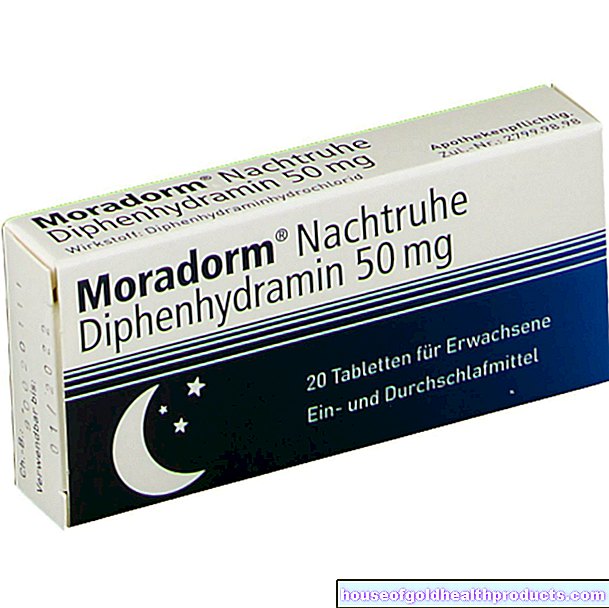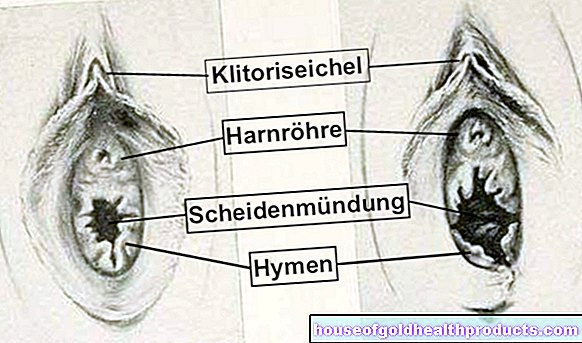Electromyography
Valeria Dahm is a freelance writer in the medical department. She studied medicine at the Technical University of Munich. It is particularly important to her to give the curious reader an insight into the exciting subject area of medicine and at the same time to maintain the content.
More about the experts All content is checked by medical journalists.Electromyography - EMG for short - is a neurological examination that measures the natural electrical activity of a muscle. In this way, the doctor can assess whether the cause of a disease lies in the area of the muscle or the nerves supplying it. Read all about electromyography, how it is done and the risks it carries.

What is electromyography?
In electromyography, the electrical activity of muscle fibers is measured and recorded as a so-called electromyogram. A distinction is made between surface EMG, in which electrodes are glued to the skin, and needle EMG, in which a needle electrode is stuck into the muscle. The activity is measured both during movement and at rest. Based on the type and intensity of the activity, the doctor can draw conclusions about the origin and extent of the disease.
Electrical muscle activity
If a muscle is to be moved, the brain sends an electrical impulse via a nerve to the so-called neuromuscular endplate, which lies between the nerve and the muscle fiber. Here messenger substances are released through the impulse, which lead to the opening of ion channels in the muscle. An electrical voltage is created. The so-called muscle action potential (MAP) spreads over the entire muscle cell, causes small muscle twitches and can be measured as potential.
When do you do an electromyography?
Electromyography, together with electroneurography (ENG), is mainly used for the more precise determination and diagnosis of nerve and muscle diseases. In the case of acute injuries or paralysis, electromyography can provide information about the severity and the chances of recovery.
In addition, the course of treatment of chronic muscle inflammation or muscle injuries can be assessed. In the meantime, electromyography is also used in biofeedback - a special procedure in behavior therapy - which can give the patient information about muscle tension that he himself does not notice. So he learns to influence them.
The most common reasons for electromyography are:
- Inflammation of the muscles (myositis)
- Muscle disorders (myopathy)
- Muscle weakness (myasthenia)
- pathologically prolonged muscle tension (myotonia)
What do you do with an electromyography?
Before the actual EMG examination, your doctor will collect your medical history and perform a comprehensive neurological examination. On this basis, he can make what is known as a suspected diagnosis and narrow down the area of the body to be examined.
The EMG begins with the introduction of the electrode into the muscle, which shows up in the electromyogram as a short, derivable electrical potential. If no potential is measured, this indicates muscle wasting. If the potential is significantly extended, the doctor assumes an inflammation or muscle disease.
Then the muscle activity is measured at rest. Since a healthy muscle does not emit any electrical impulses, it should not be possible to measure any muscle activity except for small, very short potentials.
Permanent excitation occurs when the connection between nerve and muscle is broken or the nerve itself is damaged.
In the case of interference pattern analysis, electrical activity is measured first with a small, intentional movement and then under strong tension. If the associated electromyogram only shows a small rash, there is muscle damage, while nerve damage is larger and longer.
In contrast, a surface EMG with adhesive electrodes does not record the individual muscle fibers, but the entire muscle or the entire muscle group. This type of electromyography is mainly used in sports physiology or biofeedback. The electrodes are stuck to the skin and the potentials are measured during tension and at rest.
What are the risks of electromyography?
Electromyography is a relatively uncomplicated examination. Since the needle electrode is thinner than a conventional needle, most of them only feel a short prick like an acupuncture needle. Tensing the muscle can cause mild pain. In rare cases, infection or bleeding may occur. Therefore a tendency to bleeding should be excluded before the EMG examination. Electromyography does not injure muscles or nerves. Adhesive electrodes can irritate the skin. A plaster allergy is also possible.
What do I have to consider after an electromyography?
After the ambulatory electromyography, you can go home. If any redness or inflammation occurs, please notify your doctor immediately.
Tags: news baby toddler dental care





























